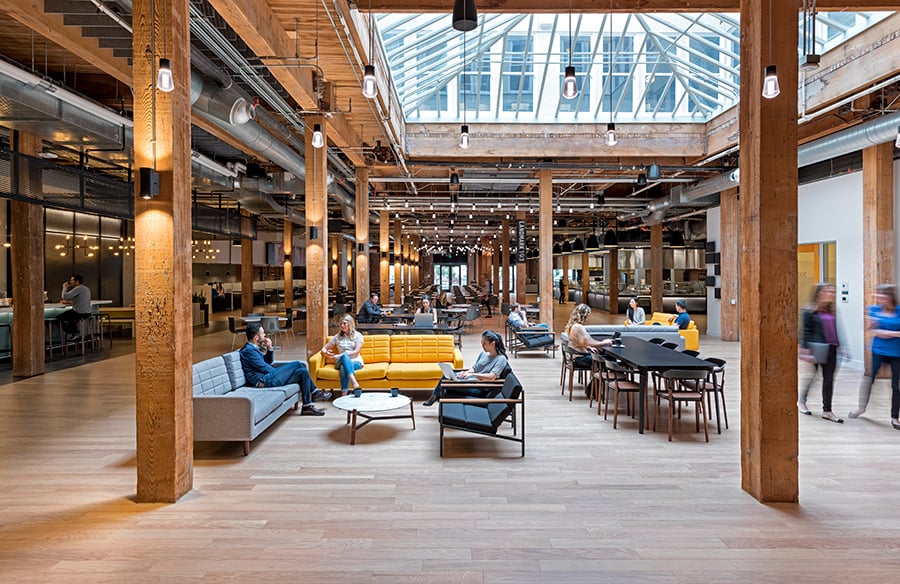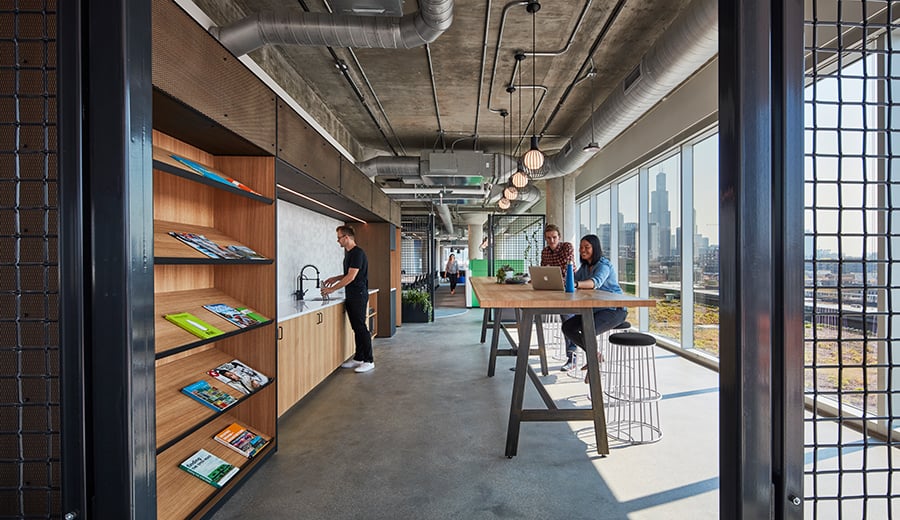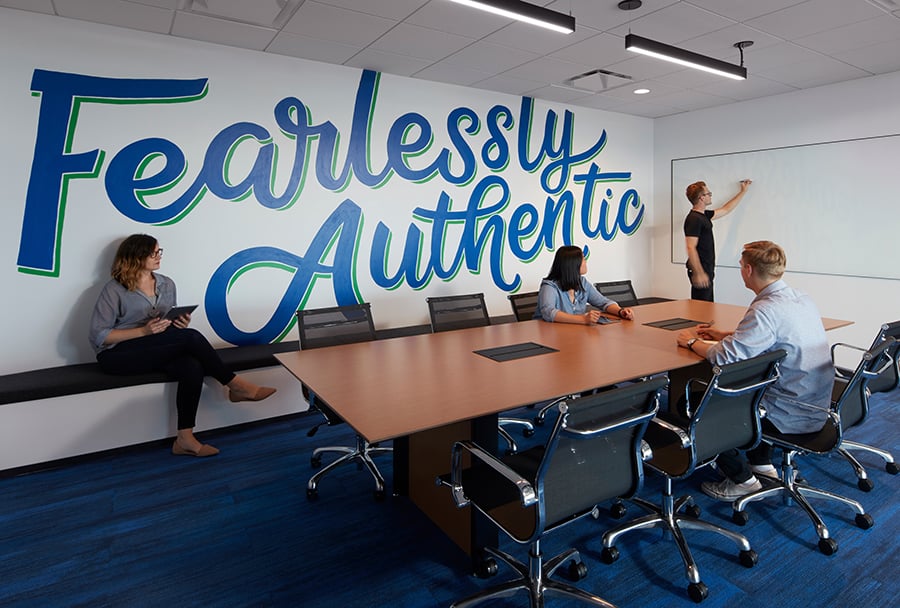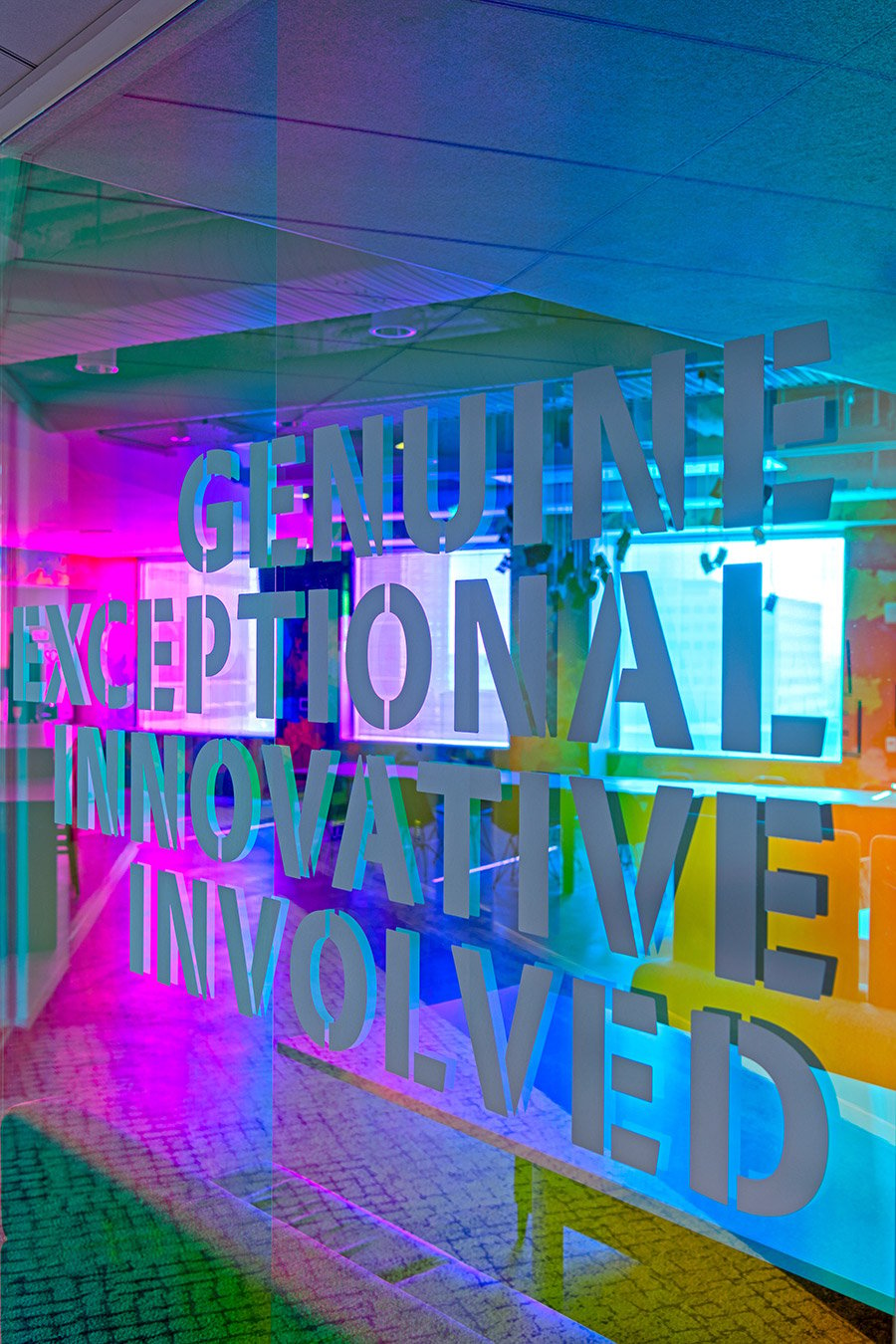
July 24, 2018
New Talent 2018: Joe Lawton’s Growing Studio Is a Hybrid of Graphic Design and Architecture
With a passion for environmental graphics, designer Joe Lawton has built a practice dubbed Media Objectives (M-O) within the architecture firm Valerio Dewalt Train Associates (VDTA).

As the founding principal of Media Objectives, a six-year-old branding and experiential graphics studio within the architecture firm Valerio Dewalt Train Associates (VDTA), Joe Lawton knows a thing or two about presentation. At 34, the designer has a knack for identity building that—along with his seemingly unrelenting grit—has already paid off, not only in terms of his studio’s commissions but also in how his work relates to the firm’s design projects at large.
This past year, Lawton was promoted to principal at VDTA, making him the youngest ever at the firm. Media Objectives (M-O) now has a full-time staff of 12, and has finished spaces for clients across sectors. In particular, Lawton has taken a shine to workplaces for tech: Projects for Adobe, SanDisk, Yelp, and Glassdoor are all in the studio’s portfolio.
For such an up-and-comer, Lawton’s beginnings at VDTA were humble. In 2010, Lawton, then in his mid-20s, came on board as a marketing coordinator. Aware of the newbie’s (largely self-taught) graphic design know-how, VDTA’s leadership presented him early on with the chance to work on a client assignment, a graduate housing project. Lawton’s brief: to translate the building’s sustainability initiatives into experiential graphics across the structure’s nine floors.

Joe Valerio, one of VDTA’s founding principals, had bigger things in mind for the young designer. “I said to him, ‘You know, if you want to make this into something a lot bigger than it is right now, we will support you,’” he says.
For years, Lawton was a marketing coordinator by day and a designer by night, building out a portfolio of experiential design. In 2012, Media Objectives was formally christened as a separately branded studio within VDTA and began taking commissions both in and out of house. As Lawton tells it, the rocky economy in the early 2010s made it an auspicious time to be in the graphics game. “Environmental graphics were more accessible than renovating an entire space,” he explains.
A project in 2013 marked a turning point for the designer: the million-plus-square-foot Google Tech Corners office in Sunnyvale, California. The campus was an opportunity for a complete integration of interior design, architecture, wayfinding, and signage. Colorful patterns adorn the interior walls of buildings within the complex, providing each with an identity within the larger unified design language. Google loved it, but more importantly, Google’s staff loved it: After it was completed, a search on Instagram for #techcorners revealed joyful, “crazy happy” employees interacting with the space, says Valerio. That was the moment, he adds, that Lawton “went from being an overhead to a profit center.”

Since then, M-O has made a name for itself in branding and the built environment. Its most successful projects are those where the two intersect, as in Glassdoor’s Chicago office. There, VDTA and M-O created a color-soaked workplace that gestures to local culture while remaining faithful to Glassdoor’s DNA. Divided into curvilinear nodes via carpet and glass enclosures, the office features “neighborhoods” corresponding to those of the Windy City. Meeting areas boast splashy murals and installations—some cheeky, as in the company logo made from baseballs as a nod to Wrigley Field. Through chalkboards, adjustable marquees, and plenty of pinup space, staffers hold agency in their office. In designing a workplace that is not only highly functional but a lot of fun, M-O and VDTA have shaped a space that is useful and reflects Glassdoor’s employee-driven culture.
This attention to the needs of a team will serve Lawton well as he grows in his position as principal at VDTA, a point that isn’t lost on him. “I want to build a supportive studio where people feel excited to come to work every day,” he says. “I want to make sure that not only are my clients happy, not only are the people experiencing the space happy; I want to make sure my team is happy.”
You may also enjoy “What I Learned About Experience Design From Buckminster Fuller.”



















